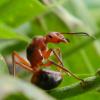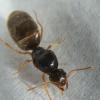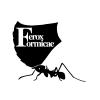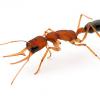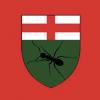- Formiculture.com
- Forums
- Gallery
- Members
- Member Map
- Chat
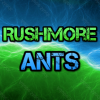
Imagine an ant (now with PINKOMYRMEX)
Started By
RushmoreAnts
, Sep 30 2019 9:41 AM
199 replies to this topic
#121
 Offline
-
Posted December 9 2019 - 3:24 AM
Offline
-
Posted December 9 2019 - 3:24 AM
Antus Verylargus
This ant species is very large as you can see in its name. They hunt in packs like Wolfes and are roughly the same size.
With enough dedication they can be tamed and can carry a human on their thorax.
They eat toxic waste and out comes joy and happiness.
Vote me as papa nature and this could be reality mother nature is clearly wasting potential
This ant species is very large as you can see in its name. They hunt in packs like Wolfes and are roughly the same size.
With enough dedication they can be tamed and can carry a human on their thorax.
They eat toxic waste and out comes joy and happiness.
Vote me as papa nature and this could be reality mother nature is clearly wasting potential
- TennesseeAnts likes this
#122
 Offline
-
Posted December 9 2019 - 4:31 PM
Offline
-
Posted December 9 2019 - 4:31 PM
Antus Verylargus
This ant species is very large as you can see in its name. They hunt in packs like Wolfes and are roughly the same size.
With enough dedication they can be tamed and can carry a human on their thorax.
They eat toxic waste and out comes joy and happiness.
Vote me as papa nature and this could be reality mother nature is clearly wasting potential
No.
- Ferox_Formicae, Manitobant, camponotuskeeper and 1 other like this
#123
 Offline
-
Posted December 11 2019 - 3:13 AM
Offline
-
Posted December 11 2019 - 3:13 AM
Oh yes and there's nothing you can do about itNo.Antus Verylargus
This ant species is very large as you can see in its name. They hunt in packs like Wolfes and are roughly the same size.
With enough dedication they can be tamed and can carry a human on their thorax.
They eat toxic waste and out comes joy and happiness.
Vote me as papa nature and this could be reality mother nature is clearly wasting potential
Edited by AntaholicAnonymous, December 11 2019 - 3:13 AM.
- DDD101DDD likes this
#124
 Offline
-
Posted December 11 2019 - 5:09 PM
Offline
-
Posted December 11 2019 - 5:09 PM
Oh yes and there's nothing you can do about it
No.Antus Verylargus
This ant species is very large as you can see in its name. They hunt in packs like Wolfes and are roughly the same size.
With enough dedication they can be tamed and can carry a human on their thorax.
They eat toxic waste and out comes joy and happiness.
Vote me as papa nature and this could be reality mother nature is clearly wasting potential
I can deny it
- DDD101DDD likes this
#125
 Offline
-
Posted December 11 2019 - 6:19 PM
Offline
-
Posted December 11 2019 - 6:19 PM
Camponotus britannia
Camponotus britannia, as indicated by the name, is endemic to the British Isles. It is a rather small species, equivelant in stature and size to the ants of the subgenus Myrmentoma. It is thought that it helps Lasius fuliginosus in the fact that it creates the cavities in wood they often occupy. They either nest in wood, or make mounds akin to that of Lasius flavus, and abandoned mounds are commonly mistaken as such. Their antennal scapes do not widen at the tip, and are devoid of erect hairs. They share all the other morphological features that Myrmentoma has, however has not been yet placed in the subgenus due to the geographic region of native occupation. It has been introduced in Eastern coastal Canada, as well as Coastal New England. It is commonly mistaken for the native, Camponotus nearcticus in these places as they are extremly similar, except for the fact that it has red feet. The ant is mainly black, although some variations have been recorded with a yellow thorax and abdomen. This variation is extremly rare, and is very much desired by anykeepers for its color contrast. Not much is known about colony size, as not many have been kept due to the fact that they are rather uncommon. They, like subterranean Lasius flavus tend root aphids. It is most commonly found in Western Wales,and less common the further East. Two colonies have been found in Ireland. Much North of Edinburgh, and the species disappears, seemingly not tolerant of the cold found there. It is also believed that nuptial flights occur just before the main summer flight of Lasius niger and flavus. The ant that it most commonly fights with is Lasius fuliginosus, the latter often winning due to massive colont size. Other than this meager information, not much is known about this species.
Camponotus britannia, as indicated by the name, is endemic to the British Isles. It is a rather small species, equivelant in stature and size to the ants of the subgenus Myrmentoma. It is thought that it helps Lasius fuliginosus in the fact that it creates the cavities in wood they often occupy. They either nest in wood, or make mounds akin to that of Lasius flavus, and abandoned mounds are commonly mistaken as such. Their antennal scapes do not widen at the tip, and are devoid of erect hairs. They share all the other morphological features that Myrmentoma has, however has not been yet placed in the subgenus due to the geographic region of native occupation. It has been introduced in Eastern coastal Canada, as well as Coastal New England. It is commonly mistaken for the native, Camponotus nearcticus in these places as they are extremly similar, except for the fact that it has red feet. The ant is mainly black, although some variations have been recorded with a yellow thorax and abdomen. This variation is extremly rare, and is very much desired by anykeepers for its color contrast. Not much is known about colony size, as not many have been kept due to the fact that they are rather uncommon. They, like subterranean Lasius flavus tend root aphids. It is most commonly found in Western Wales,and less common the further East. Two colonies have been found in Ireland. Much North of Edinburgh, and the species disappears, seemingly not tolerant of the cold found there. It is also believed that nuptial flights occur just before the main summer flight of Lasius niger and flavus. The ant that it most commonly fights with is Lasius fuliginosus, the latter often winning due to massive colont size. Other than this meager information, not much is known about this species.
- TennesseeAnts and Antennal_Scrobe like this
Hi there! I went on a 6 month or so hiatus, in part due, and in part cause of the death of my colonies.
However, I went back to the Sierras, and restarted my collection, which is now as follows:
Aphaenogaster uinta, Camponotus vicinus, Camponotus modoc, Formica cf. aserva, Formica cf. micropthalma, Formica cf. manni, Formica subpolita, Formica cf. subaenescens, Lasius americanus, Manica invidia, Pogonomyrmex salinus, Pogonomyrmex sp. 1, Solenopsis validiuscula, & Solenopsis sp. 3 (new Sierra variant).
#126
 Offline
-
Posted December 11 2019 - 6:20 PM
Offline
-
Posted December 11 2019 - 6:20 PM
Is that able to be drawn by anybody? Just curious, because I think the color variation could be made to look stunning.
Edited by NickAnter, December 12 2019 - 6:36 AM.
Hi there! I went on a 6 month or so hiatus, in part due, and in part cause of the death of my colonies.
However, I went back to the Sierras, and restarted my collection, which is now as follows:
Aphaenogaster uinta, Camponotus vicinus, Camponotus modoc, Formica cf. aserva, Formica cf. micropthalma, Formica cf. manni, Formica subpolita, Formica cf. subaenescens, Lasius americanus, Manica invidia, Pogonomyrmex salinus, Pogonomyrmex sp. 1, Solenopsis validiuscula, & Solenopsis sp. 3 (new Sierra variant).
#127
 Offline
-
Posted December 11 2019 - 6:32 PM
Offline
-
Posted December 11 2019 - 6:32 PM
Is that able to be drawn by anybody? Just curious, because I think the folor variation could be made to look stunning.
Probably, but the colors don't sound too amazing. Black body with red feet. Only really good looking part is if you drew the yellow thorax.
#128
 Offline
-
Posted December 11 2019 - 7:45 PM
Offline
-
Posted December 11 2019 - 7:45 PM
Is that able to be drawn by anybody? Just curious, because I think the folor variation could be made to look stunning.
I may be able to do it. DM me for details.
Currently Keeping:
Camponotus chromaiodes, Camponotus nearcticus, Stigmatomma pallipes, Strumigenys brevisetosa, Strumigenys clypeata, Strumigenys louisianae, Strumigenys membranifera, Strumigenys reflexa, Strumigenys rostrata
#129
 Offline
-
Posted December 29 2019 - 4:52 PM
Offline
-
Posted December 29 2019 - 4:52 PM
Protalaridris confusium
Stigmatomma proceratum
I do not want to get bitten by any of those ![]()
#130
 Offline
-
Posted December 29 2019 - 5:07 PM
Offline
-
Posted December 29 2019 - 5:07 PM
Protalaridris confusium
Stigmatomma proceratum
I do not want to get bitten by any of those
They're based on real ants.
#131
 Offline
-
Posted December 29 2019 - 5:20 PM
Offline
-
Posted December 29 2019 - 5:20 PM
Dorylus Pteronopsis
Dorylus pteronopsis are one of the few ants qualifying as "army ants" native to temperate regions. D. pteronopsis inhabits southern Canada down to north Mexico, including most of the US (excluding states on the west coast and Maine). Workers of D. ptrenopsis are split into 3 subcastes: the workers, the soldiers (majors), and massive winged supermajors, about 3 times the size of the majors, almost 30 mm. The supermajors jaws have specialized pores to secrete formic acid onto any bite, and a pore just below their stinger allows the ant to spray formic acid in flight. In their nomadic phase, the ants primarily walk along the ground, but when confronted with an obstacle such as a body of water, the colony takes flight. The tarsal claws of the workers and soldiers and fine hairs of the supermajors are specially designed to adhere to eachother like velcro. The queens (yes, queens), usually accompanied by troves of her daughters (supermajors included), also have wings. Flight formations vary, but are usually found in either a V or a column. Flight speed ranges from 5 to 15 mph. Colonies in flight often pursue insects and even small birds, which the supermajors swarm and sting/spray to death (after their prey is confirmed to be dead, they will carry it with them to their next destination). When not marching or flying, the colony takes up residence within a log or some sort of cavity. The workers are capable of secreting a silk-like substance similar to that of weaver ants. This substance is used for guarding bivuoac entrances and capturing prey (workers will often set up spide-like webs around their temporary nest). The substance is adhesive and coated with formic acid.
Colonies of D. pteronopsis are also capable of merging together as in Linepithema humile. Small ants such as Solenopsis molesta, Lasius neoniger, et al, have been found within colonies of D. pteronopsis as slaves. They are often seen tending to brood, cleaning supermajors, and even the queens. D. pteronopsis colonies will even take their slaves with them on flights. Flights can last for very long times and traverse immense distances. Colonies have been known from the Caribbean to sometimes fly miles from island to island in search of food. During the colder months, colonies will dig deep underground tunnels, usually under houses or roads, to hibernate.
Despite their terrifying description, the ants are actually quite docile. They will not attack unless injured, but even gentle handling is unadvisable, as the ants have a tendency to clean the hands of their handler, and this "cleaning" sometimes involves soft but swift bites.
Supermajors and queens have highly developed brains compared to other ants and are capable of remembering things such as landmarks, events, and even faces.
#132
 Offline
-
Posted December 29 2019 - 5:21 PM
Offline
-
Posted December 29 2019 - 5:21 PM
Protalaridris confusium
Stigmatomma proceratum
I do not want to get bitten by any of those
They're based on real ants.
Where do those real ants live because I want at least a 500 mile space between me and them
EDIT: Wait I can just check Antmaps.org for the genera (I know the species is made up...)
Edited by TheMicroPlanet, December 29 2019 - 5:23 PM.
#133
 Offline
-
Posted December 29 2019 - 5:40 PM
Offline
-
Posted December 29 2019 - 5:40 PM
Protalaridris confusium
Stigmatomma proceratum
I do not want to get bitten by any of those
They're based on real ants.
Where do those real ants live because I want at least a 500 mile space between me and them
EDIT: Wait I can just check Antmaps.org for the genera (I know the species is made up...)
Protalaridris is one of the rarest ants in south America, but stigmatomma are pretty spread out, and are found in your region.
#134
 Offline
-
Posted January 1 2020 - 4:32 PM
Offline
-
Posted January 1 2020 - 4:32 PM
Stigmatomma really isn't that scary. They're not big, and the same general shape as Ponera. They do drink their own larvae's hemolymph, though.....
"God made..... all the creatures that move along the ground according to their kinds (including ants). And God saw that it was good. Genesis 1:25 NIV version
Keeping:
Formica cf. pallidefulva, cf. incerta, cf. argentea
Formica cf. aserva, cf. subintegra
Myrmica sp.
Lasius neoniger, brevicornis
#135
 Offline
-
Posted January 1 2020 - 5:21 PM
Offline
-
Posted January 1 2020 - 5:21 PM
Eciton arborealis
Eciton arborealis is an army ant native to south America. It differs from other army ants in that it has a completely arboreal lifestyle, living high up in the treetops and rarely venturing to the ground. They construct temporary bivouacs in hollowed out trees as well as tree cavities and sometimes even in the nests of their prey. The ants have a statary/nomadic cycle like other army ants and conduct impressive raids in the canopy. The ants will swarm from branch to branch and catch any insects in their way, but their favorite prey is wasps and arboreal ant species, whose nests they will break into and slaughter the inhabitants. Their most impressive aspect however is their ability to construct huge bridges, longer than those of any other ant species. These bridges, made of living workers, allow them to travel to different trees and maintain a nomadic lifestyle as well as have a constant supply of new prey.
Eciton arborealis is an army ant native to south America. It differs from other army ants in that it has a completely arboreal lifestyle, living high up in the treetops and rarely venturing to the ground. They construct temporary bivouacs in hollowed out trees as well as tree cavities and sometimes even in the nests of their prey. The ants have a statary/nomadic cycle like other army ants and conduct impressive raids in the canopy. The ants will swarm from branch to branch and catch any insects in their way, but their favorite prey is wasps and arboreal ant species, whose nests they will break into and slaughter the inhabitants. Their most impressive aspect however is their ability to construct huge bridges, longer than those of any other ant species. These bridges, made of living workers, allow them to travel to different trees and maintain a nomadic lifestyle as well as have a constant supply of new prey.
My journals:
Polyergus Mexicanus: https://www.formicul...gs/#entry175528
Lasius minutus: https://www.formicul...cs/#entry174811
Lasius latipes: https://www.formicul...gs/#entry206449
General acanthomyops journal: https://www.formicul...yops-with-eggs/
Polyergus Mexicanus: https://www.formicul...gs/#entry175528
Lasius minutus: https://www.formicul...cs/#entry174811
Lasius latipes: https://www.formicul...gs/#entry206449
General acanthomyops journal: https://www.formicul...yops-with-eggs/
#136
 Offline
-
Posted January 2 2020 - 12:37 PM
Offline
-
Posted January 2 2020 - 12:37 PM
Stigmatomma really isn't that scary. They're not big, and the same general shape as Ponera. They do drink their own larvae's hemolymph, though.....
general shape, besides huge serrated jaws.
- TennesseeAnts likes this
#137
 Offline
-
Posted January 2 2020 - 2:54 PM
Offline
-
Posted January 2 2020 - 2:54 PM
Still no reason to be afraid of them, though. No need to move 500 miles away from them....
"God made..... all the creatures that move along the ground according to their kinds (including ants). And God saw that it was good. Genesis 1:25 NIV version
Keeping:
Formica cf. pallidefulva, cf. incerta, cf. argentea
Formica cf. aserva, cf. subintegra
Myrmica sp.
Lasius neoniger, brevicornis
#138
 Offline
-
Posted January 2 2020 - 2:57 PM
Offline
-
Posted January 2 2020 - 2:57 PM
Stigmatomma really isn't that scary. They're not big, and the same general shape as Ponera. They do drink their own larvae's hemolymph, though.....
general shape, besides huge serrated jaws.
Eh, the petiole is completely different from any Ponerine.
- TennesseeAnts likes this
Currently Keeping:
Camponotus chromaiodes, Camponotus nearcticus, Stigmatomma pallipes, Strumigenys brevisetosa, Strumigenys clypeata, Strumigenys louisianae, Strumigenys membranifera, Strumigenys reflexa, Strumigenys rostrata
#139
 Offline
-
Posted January 2 2020 - 3:03 PM
Offline
-
Posted January 2 2020 - 3:03 PM
Myrmica infinita
Myrmica infinita is a species of ant in the subfamily Myrmicinae. It is native to the southern Canada, U.S., Mexico, and Central America.This species is noted for its ability to produce queens in the nest, in a similar fashion to Paratrechina longicornis. Colonies grow very large, even millions in tropical regions where food is plentiful. Like other species of Myrmica, the nests are shallow, and therefore entire colonies can be collected. This is necessary for keeping them, as colonies bud as opposed to having nuptial flights. New colonies are founded throughout the year, in which several hundred workers and a few queens file out of the nest, and begin construction of a new nest. New nests are considered to be satellite nests of the parent colony, and thus grow into massive empires. Separate empires are extremely hostile toward each other, and often engage in large scale wars for territory. Nests can be occupied by other empires. An invaded nest has all resident workers slain, yet brood and queens are kept alive and added to the conquering empire.
Edited by AntsDakota, January 2 2020 - 3:20 PM.
"God made..... all the creatures that move along the ground according to their kinds (including ants). And God saw that it was good. Genesis 1:25 NIV version
Keeping:
Formica cf. pallidefulva, cf. incerta, cf. argentea
Formica cf. aserva, cf. subintegra
Myrmica sp.
Lasius neoniger, brevicornis
#140
 Offline
-
Posted January 2 2020 - 3:19 PM
Offline
-
Posted January 2 2020 - 3:19 PM
Acromyrmex americanus
Acromyrmex americanus is a species of ant in the subfamily Myrmicinae. They are found in the prairie provinces of Canada and Upper Midwestern U.S. It is one of the few species of Acromyrmex known to be able to survive temperatures below freezing. It tends a unique species of fungi, Myrmicofingunt mouchla, which is known to be extremely hardy, even during periods of extreme cold. Workers are 4-26 mm long, while queens are 28-31 mm. Nuptial flights occur in August and September. Dealate queens perform pleometrosis, and some colonies even become polygynous, when certain conditions are favorable. This is common in captive conditions. The M. mouchla fungus feeds on various types of grasses, which the ants harvest by cutting the top half off, so the grass will grow back. This behavior earns them the nickname 'lawnmower ants' ![]()
![]() . This diet of most grass species enables them to live in both rural and suburban environments and even urban environments alike.
. This diet of most grass species enables them to live in both rural and suburban environments and even urban environments alike.
Edited by AntsDakota, January 3 2020 - 3:12 PM.
- TennesseeAnts likes this
"God made..... all the creatures that move along the ground according to their kinds (including ants). And God saw that it was good. Genesis 1:25 NIV version
Keeping:
Formica cf. pallidefulva, cf. incerta, cf. argentea
Formica cf. aserva, cf. subintegra
Myrmica sp.
Lasius neoniger, brevicornis
1 user(s) are reading this topic
0 members, 1 guests, 0 anonymous users





